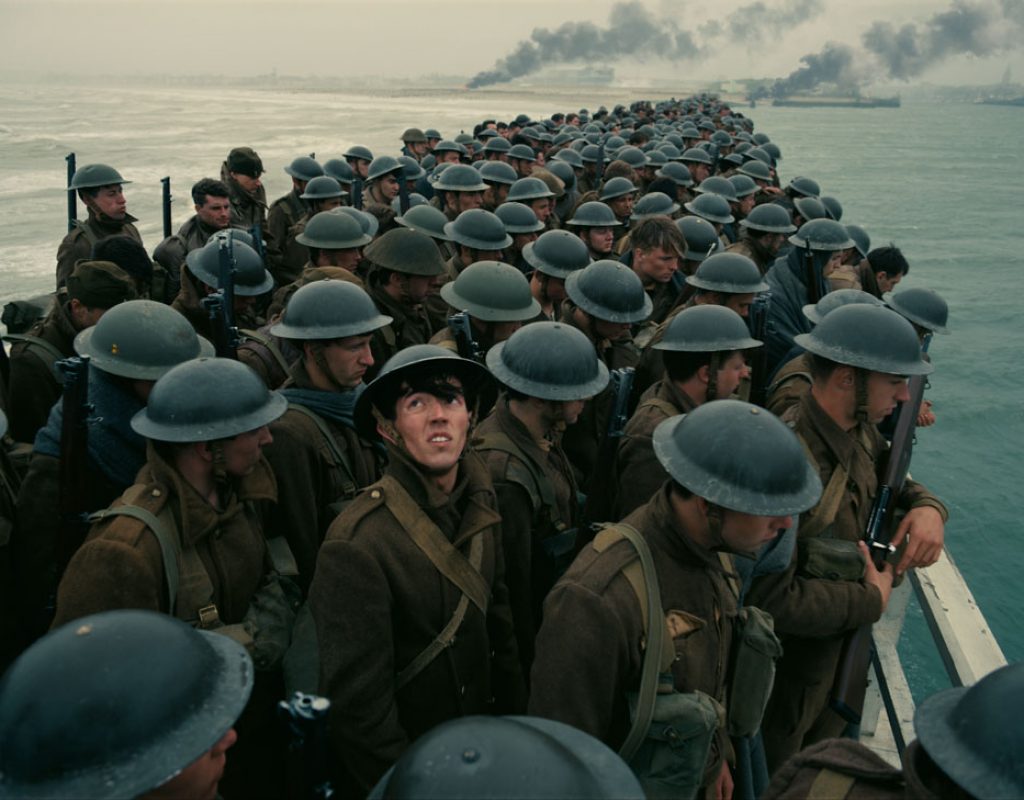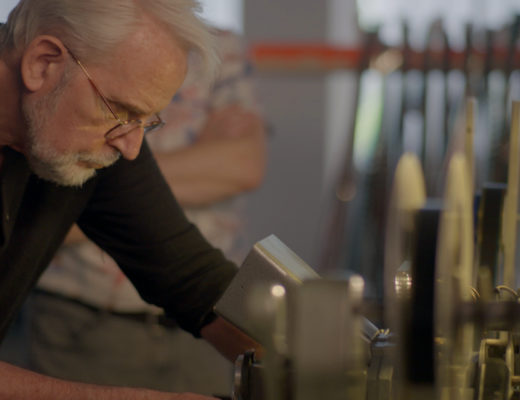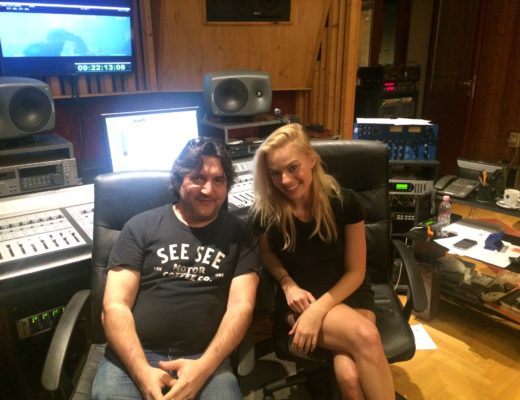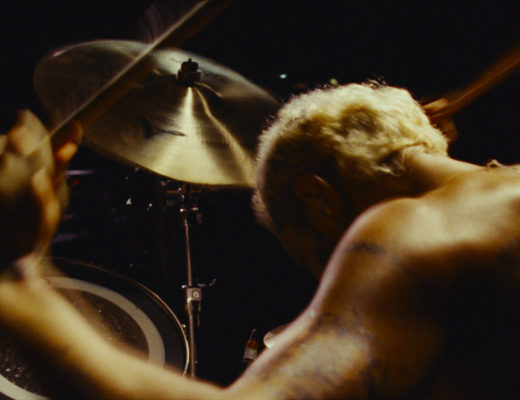John Lee has been as assistant editor since 1993, including work as assistant editor, associate editor or additional editor on The Matrix, Mission Impossible II, Lord of the Rings: Fellowship of the Ring, Master and Commander, Batman Begins, The Prestige, The Dark Knight, Inception, Interstellar, Spectre, Suicide Squad and most recently as associate editor on Dunkirk. Those films have totaled more than $2 billion in domestic box office. He is currently working with editor Lee Smith, ACE on X-Men: Dark Phoenix.
While this article focuses on the technnical and logistics of the project, you can read about the creative editing in my previous interview with multi-Oscar-nominated editor, Lee Smith, ACE, here.
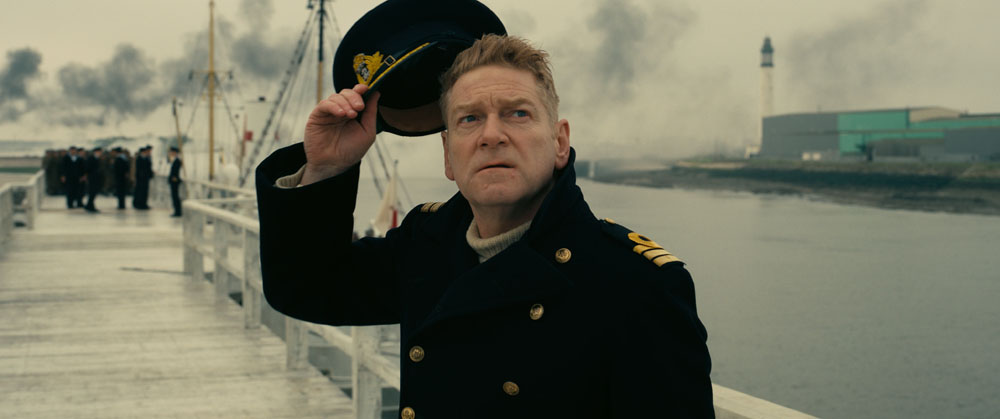 HULLFISH: Tell me about the schedule on Dunkirk. When did you start principal photography and when did you finish and when did you guys get a director’s cut. Just like in general terms.
HULLFISH: Tell me about the schedule on Dunkirk. When did you start principal photography and when did you finish and when did you guys get a director’s cut. Just like in general terms.
LEE: Our shooting schedule was about 16 weeks. Then we had about 43 weeks of post taking us up to the release. I started talking with Chris months before the shoot to discuss the project and how he planned to shoot it.
In this case, he said he wanted to shoot the whole movie in large format. No 35mm. This is something we hadn’t done before. Previously we started shooting with some IMAX on Dark Knight and then again on Dark Knight Rises. On Inception, we shot quite a bit of 65mm 5 perf. By the time we did Interstellar I think almost half of that movie was IMAX and the rest was 35mm.
But for Dunkirk, Chris wanted it to be all large format. He thought it would be a 50/50 split between IMAX and 65mm 5 perf. The thinking was that the IMAX cameras would be great for the action sequences and where we had more dialogue we’d use the quieter 5 perf cameras. The film probably ended up being 70% IMAX in the end because it just looked so great and there isn’t an enormous amount of dialogue in the film.
I had to figure out the logistics of shooting in several European locations with no local film lab. Ultimately Fotokem in Los Angeles was the best choice for us anyway because that’s the lab that we would use for all of our post.
At the end of the shoot day we always screen dailies on film. This way Lee and Chris have time to discuss the footage and I can deal with any technical issues. People don’t do that anymore. People watch it on PIX. They watch it on their phones.
HULLFISH: What are the logistics of shooting in France and having your film lab in LA and your post team traveling throughout Europe? Were you shipping film to LA every night and then prints back? What about Avid media?
LEE: We decided that Lee and I would go on location while our assistants would stay in Los Angeles. Our film first assistant, Laura Rindner, ran the film cutting room and our Avid first assistant, Eric Lewy, took care of the rest. We had two Avids and an ISIS for storage on location and an identical set up in LA at Warner Bros. Our film cutting room in LA was pretty elaborate with equipment for both 35mm and 70mm 5 perf film.
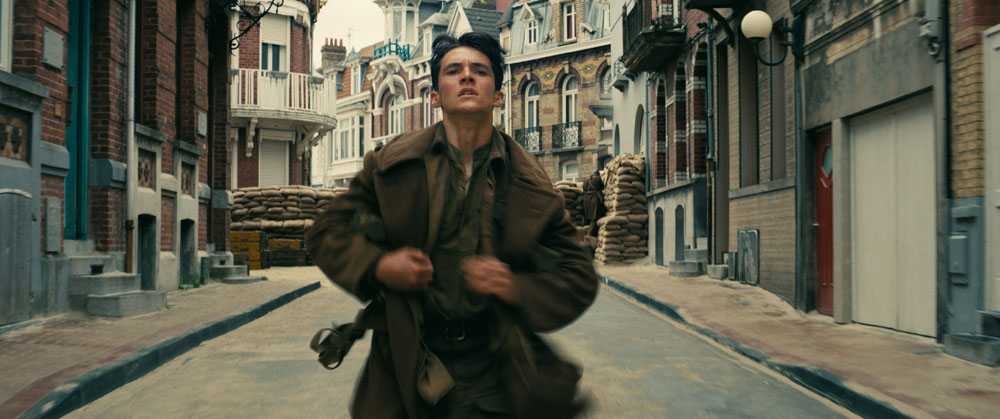 We’d send the exposed negative back to LA. For the 5 perf material, it would be processed and printed and screened by our crew in LA. Then they’d telecine the 70mm print. Our Avid assistants would sync in the Avid and spit out a WAV file onto a disc and they’d send us the print and the sound. We had sourced a 70mm projector in Paris and we got our favorite projectionist from London and we built a great little theatre in Dunkirk for dailies. We’d play the sync sound on a Fostex DV40. So on location we had 70mm dailies screenings instead of a reduction print. It was terrific and we took that 70mm projector from place to place with us.
We’d send the exposed negative back to LA. For the 5 perf material, it would be processed and printed and screened by our crew in LA. Then they’d telecine the 70mm print. Our Avid assistants would sync in the Avid and spit out a WAV file onto a disc and they’d send us the print and the sound. We had sourced a 70mm projector in Paris and we got our favorite projectionist from London and we built a great little theatre in Dunkirk for dailies. We’d play the sync sound on a Fostex DV40. So on location we had 70mm dailies screenings instead of a reduction print. It was terrific and we took that 70mm projector from place to place with us.
The IMAX went through a different path. If you print up all your IMAX, it’s going to cost way too much plus you’d need an IMAX theater to screen it. So we made 35mm reduction prints instead. To get that 35mm reduction to us in a hurry, we didn’t sync it actually. The team would check it in LA at FotoKem and then they’d send it to us and we would screen it without sound because basically the IMAX was all of the stuff that was action so the sound didn’t matter to Chris and he said he’d rather get it there a day earlier and see it without sound.
We had a screening trailer that we parked right next to the theatre we built and we would screen 35mm reduction print of all the IMAX material in that trailer on an Arri LocPro. Then we would send the 35mm reduction print back to our crew at Warner Brothers and they would telecine it and sync it up. Then they would send Avid media to us on location and I would download it at my end and I’d give it to Lee and he would start cutting.
HULLFISH: So those 35mm reductions weren’t really synced and ingested in the Avid for the better part of a week after shooting?
LEE: That’s right. Labs don’t have nightshifts anymore — things have changed. So if your film arrives at the lab in the afternoon it doesn’t go into a night bath. It goes into a bath the next morning. So there are all these logistical things we had to figure out but the crew in LA were seeing things two days, at least, before Lee and I would watch it. Also, for the IMAX, we had David Keighley and his team putting an eye on it. Problems were flagged in LA by our crew before the film got back to us in Europe. So if there was trouble with a lens or a camera for example we could flag that pretty quickly.
We were shooting in France for about six weeks. It was kind of wild to be in the actual place where the battle happened. It was quite moving. I went down to the beach when they were shooting the really big scenes and there was a Spitfire flying overhead and lines of soldiers going out into the sea. It actually took my breath away.
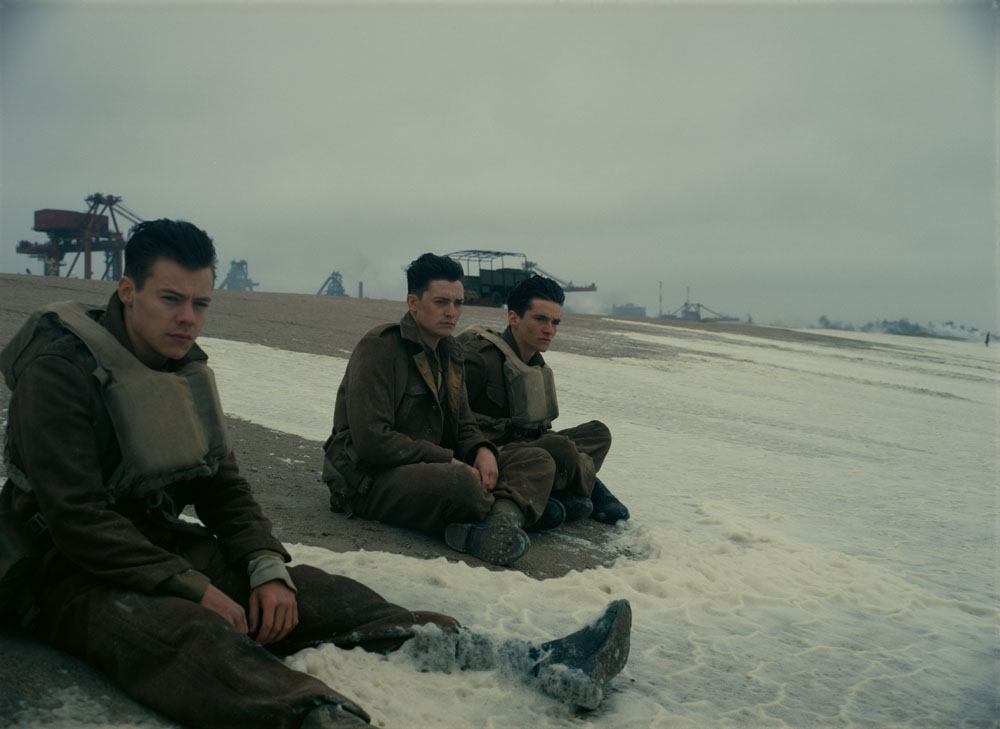 After that we went to Urk in the Netherlands and shot for four weeks. We took our 70mm projector over there and built a theatre in a warehouse. We were based down on the harbor because they were shooting out at sea the whole time. The sea off Urk is very secluded and protected from the weather. We shot a lot of the scenes with the destroyers and the little ships out there. Also the aerial bombing runs and things like that.
After that we went to Urk in the Netherlands and shot for four weeks. We took our 70mm projector over there and built a theatre in a warehouse. We were based down on the harbor because they were shooting out at sea the whole time. The sea off Urk is very secluded and protected from the weather. We shot a lot of the scenes with the destroyers and the little ships out there. Also the aerial bombing runs and things like that.
After Urk, we went to England to shoot the final aerial footage. Because we were only there for a very short time we often cut with the video tap so that Chris could see immediately how the footage integrated into the cut.
Then we came back to LA and shot another few weeks at Warner Bros in Stage 16 and up at Falls Lake at Universal.
HULLFISH: What were some of the other challenges in delivering this film through the post-production pipeline?
LEE: The main issue was that we needed to have a 70mm five perf screening about 13 or 14 weeks after finishing the shoot. But most of the movie was shot on IMAX 15 perf. So to conform the print we had to make all the individual IMAX shots into 5 perf shots with handles.
Our VFX shots needed to be on film too for the screening. Often we’d need to deliver two versions of a shot. For example, if there’s an IMAX shot that’s a visual effect we scan that fifteen perf negative, they do the work and then they have to give us TWO visual effects negatives back: one in 15 perf IMAX and the other in five perf. The 5 perf version would basically be a center extraction of the IMAX shot.
But all the non VFX shots that were IMAX, Chris wanted to do optically. So we took the 15 perf negative of each shot and made a five perf interpositive and then we made a five perf internegative and then we made a print and we would screen that.
Then we’d telecine the shots and cut them into the AVID timeline and that was our process. When we had enough and it was time to get ready for the screening, I made assemble lists with FilmScribe and our conforming crew of assistant editors conformed the film.
There were about 667 optical extractions plus another 80 digital extractions as well as 350 VFX shots that all had to be completed on film for our screenings.
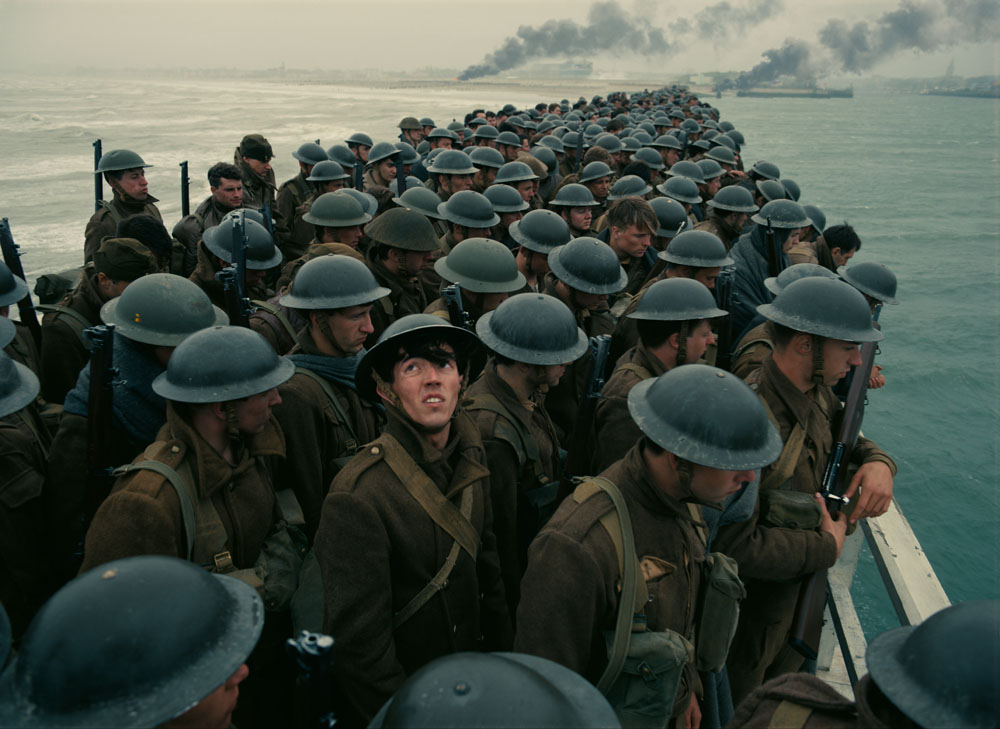 HULLFISH: How long did those screenings take to get ready? I mean on the films I’ve cut, if somebody wants to do a Friday night screening, you can still be cutting Friday morning before you start to get the screening prepared to go. But the lead time to prepare for this 70mm screening sounds like it would take weeks.
HULLFISH: How long did those screenings take to get ready? I mean on the films I’ve cut, if somebody wants to do a Friday night screening, you can still be cutting Friday morning before you start to get the screening prepared to go. But the lead time to prepare for this 70mm screening sounds like it would take weeks.
LEE: During our ten week director’s cut we often had Friday evening screenings straight out of the AVID just for us.
But the actual big film screening for the studio is on the schedule and it’s a mathematical problem for us. We look at it and figure to get to that date on film it takes a certain amount of time to make an optical. We work backwards from the date and say to get that many opticals done by this date we need to start here. And for the conform we need this many assistant editors, we need this sort of equipment.
HULLFISH: I’ve never worked on a film that did pre-screenings on film print. When did Lee have to lock his cut in order to deliver the first printed screening? It had to be weeks! So he was still cutting away on a new version of the film, I’d assume while all of this is going along and the screening version would be several weeks behind the actual edit decisions.
LEE: Well, I think they’d stop cutting two weeks before the screening. But we’d have a temp mix then anyway. We’d start conforming before that while they were still cutting. It’s easier to get the bulk of the conforming done and then deal with changes later. There was about 7 weeks of conforming to get to that first screening. Then we kept updating and changing to get to the next screenings.
HULLFISH: So all of that was going on in LA?
LEE: Yes. Post was in LA.
HULLFISH: Talk to me about the complexities of having to do these change lists across the 70mm five perf and 15 perf IMAX. You’re having to conform everything twice, right?.
LEE: Exactly. We conformed the 5 perf version first and did all our screenings. When we went onto the mix stage for the final mix we had locked the picture. The mix lasted about 6 weeks and during that time we started to cut the 65mm 5 perf negative. Then we got into the color timing and we started to get prints of the finished reels back and we’d screen those up against our mix.
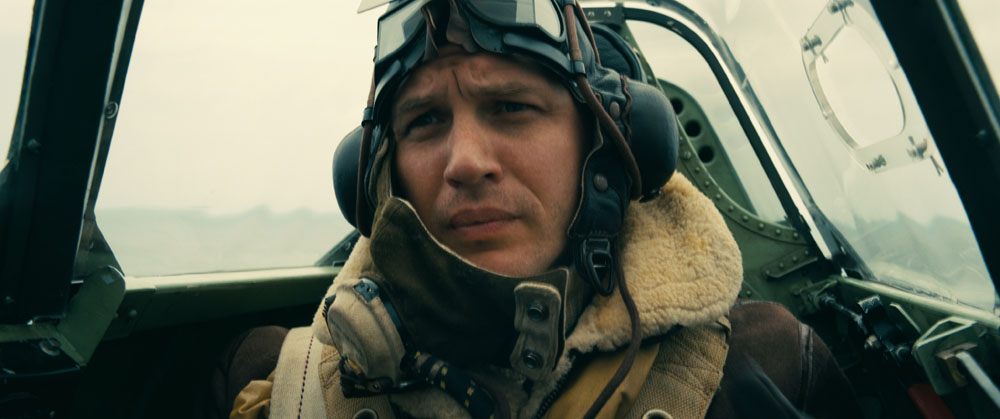 On films that aren’t doing a film finish when you’re on the mix stage you can still cut right up until the last minute because you’re doing a DI somewhere. But Chris kind of compartmentalizes things. You have to with a film finish. He gets to the end of the cut and as far as he’s concerned the film’s locked and that really means locked.
On films that aren’t doing a film finish when you’re on the mix stage you can still cut right up until the last minute because you’re doing a DI somewhere. But Chris kind of compartmentalizes things. You have to with a film finish. He gets to the end of the cut and as far as he’s concerned the film’s locked and that really means locked.
It’s towards the end of the mix that we start really working on the IMAX version. We have two timelines in the Avid and the IMAX version is 35mm reduction print. So I gave lists to the film assistants once again and they started conforming the 35mm version and it goes quicker because it’s easier to do than 70. They built that whole version and we sent the reels and lists over to the neg cutters at IMAX and they started neg cutting the 15 perf version.
It gets confusing because we have five AB reels in the Avid and at the mix. But that is 10 separate A and B reels for the 5 perf version. For IMAX we have thirty three reels. I had all these handwritten lists so that if someone called me from IMAX with a problem in their reel 17, for example, I would know that was in my Reel 4A and I’d know we were talking about the same thing.
Our IMAX film didn’t have the five perf sections in it because it’s the wrong format. So we took the five perf color-timed interpositive and we made an optical blow up to a 15 perf internegative and they cut that into their IMAX negative. So when you see the IMAX version the five perf sections are done optically.
Vince Roth at Fotokem did all of our optical IMAX extractions to 5 perf as well as these optical blow-up sections from 5 perf to 15 perf.
HULLFISH: So color correction of this entire film was all optical and photochemical?
LEE: Yes. Dan Muscarella did the color timing for the IMAX and the 70mm five perf and we also made a 35mm anamorphic internegative optically from which we made 35mm prints. And then of course we did our digital versions- a regular DCP and two IMAX digital versions- Laser and Xenon.
HULLFISH: Did you use 5.1 monitoring in the edit suites? Or LCR? Or what?
LEE: We had stereo music and stereo SFX.
HULLFISH: How do you provide production sound to Lee? Do you just subclip to a single mono mix track from location? Or is he carrying six or eight tracks of production audio with the visual?
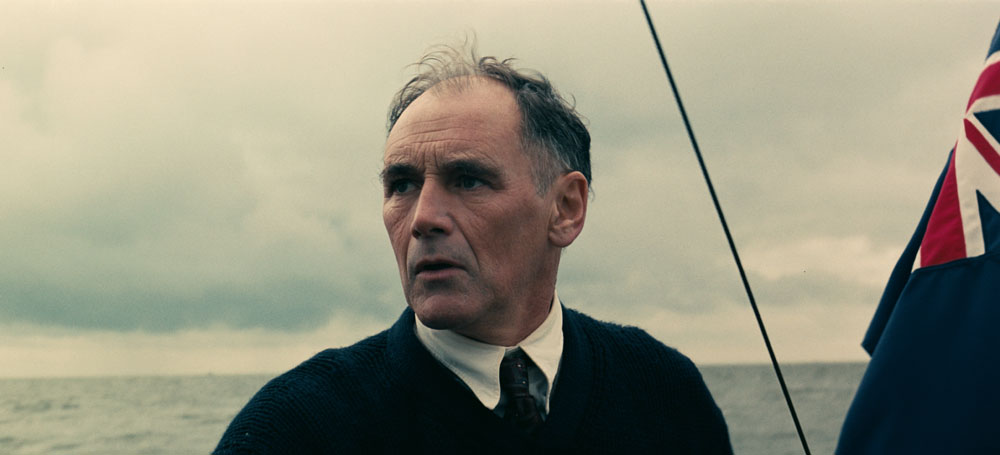 LEE: We’ll sync all eight tracks but we generally sub clip out just the mix track. If there are overlaps, we’ll give Lee the mix track and a couple of individual tracks. But usually he wants to cut quickly so he doesn’t want to be dealing with six or eight tracks of audio. Lee is a very fast editor. He cuts very quickly and intuitively. And we just make it so he can easily do that.
LEE: We’ll sync all eight tracks but we generally sub clip out just the mix track. If there are overlaps, we’ll give Lee the mix track and a couple of individual tracks. But usually he wants to cut quickly so he doesn’t want to be dealing with six or eight tracks of audio. Lee is a very fast editor. He cuts very quickly and intuitively. And we just make it so he can easily do that.
Lee used to be a sound designer, so he does a lot of his own sound work. We have a big sound effects library that we’ve added to on each film we do.
But then on a film like this, it’s all new. What do we have for a Spitfire? Just the engine droning would be pretty dull. Chris wanted the excitement of that cockpit shaking especially when the guns fire so he actually got a little ZOOM recorder and he recorded the fan in the cutting room and a couple of other bits and pieces and then we put it together. We made this sound of the cockpit shaking apart and we gave it to the sound designer and said, “This is the idea that Chris is after.”
HULLFISH: Lee said that you guys were editing in a trailer on the airfield and he stepped out of the trailer one day when the Messerschmidts went by and said it was terrifying.
LEE: Yeah, it really is an amazing sound.
HULLFISH: This is amazingly complex. Do you get to spend any time with Lee, getting to watch him cut?
LEE: During the shoot I spend a lot of time with Lee. Once we get to post he’s in with Chris all day and I don’t get to see him much.
HULLFISH: When you guys started screening these in 70mm, do you remember any changes that needed to occur in the editing, since Lee is just cutting away on the Avid, then timings shift when you see the very immersive 70mm screening size?
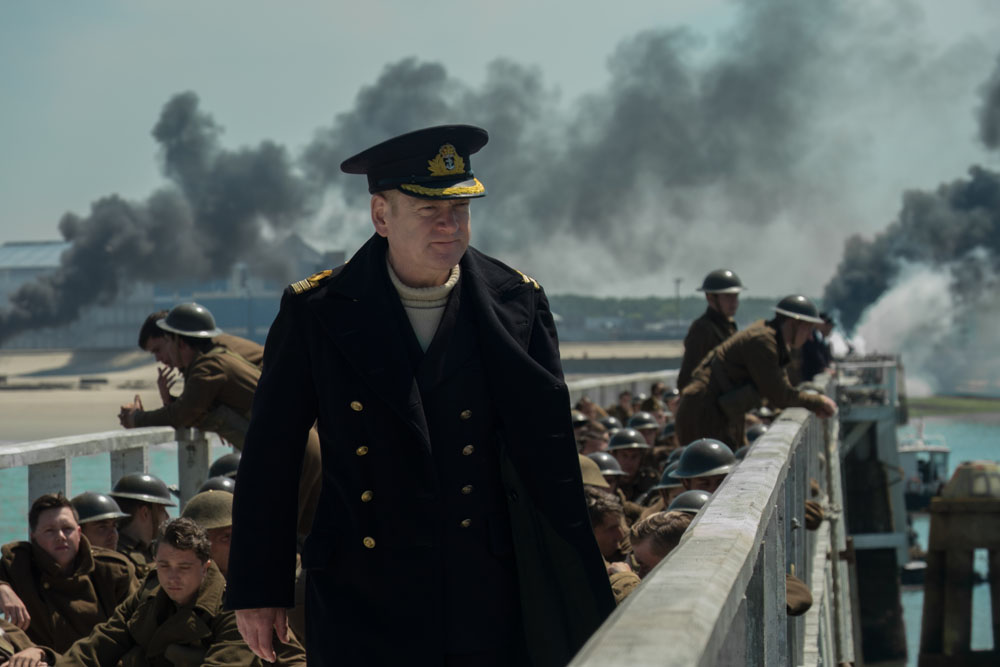 LEE: We had done a bunch of tests back on Dark Knight when we first started mixing IMAX and 35mm together. Ultimately we decided that we didn’t really need to make any changes to the pace of the editing so Lee just concentrates on the story and forgets about the format.
LEE: We had done a bunch of tests back on Dark Knight when we first started mixing IMAX and 35mm together. Ultimately we decided that we didn’t really need to make any changes to the pace of the editing so Lee just concentrates on the story and forgets about the format.
HULLFISH: John thank you so much for your time.
LEE: Well Steve, it’s been fun and I’ve got to say I really enjoy your writing. I love to read the stories about other people’s films. It’s always very informative.
This interview was transcribed using SpeedScriber. For more, see speedscriber.com.
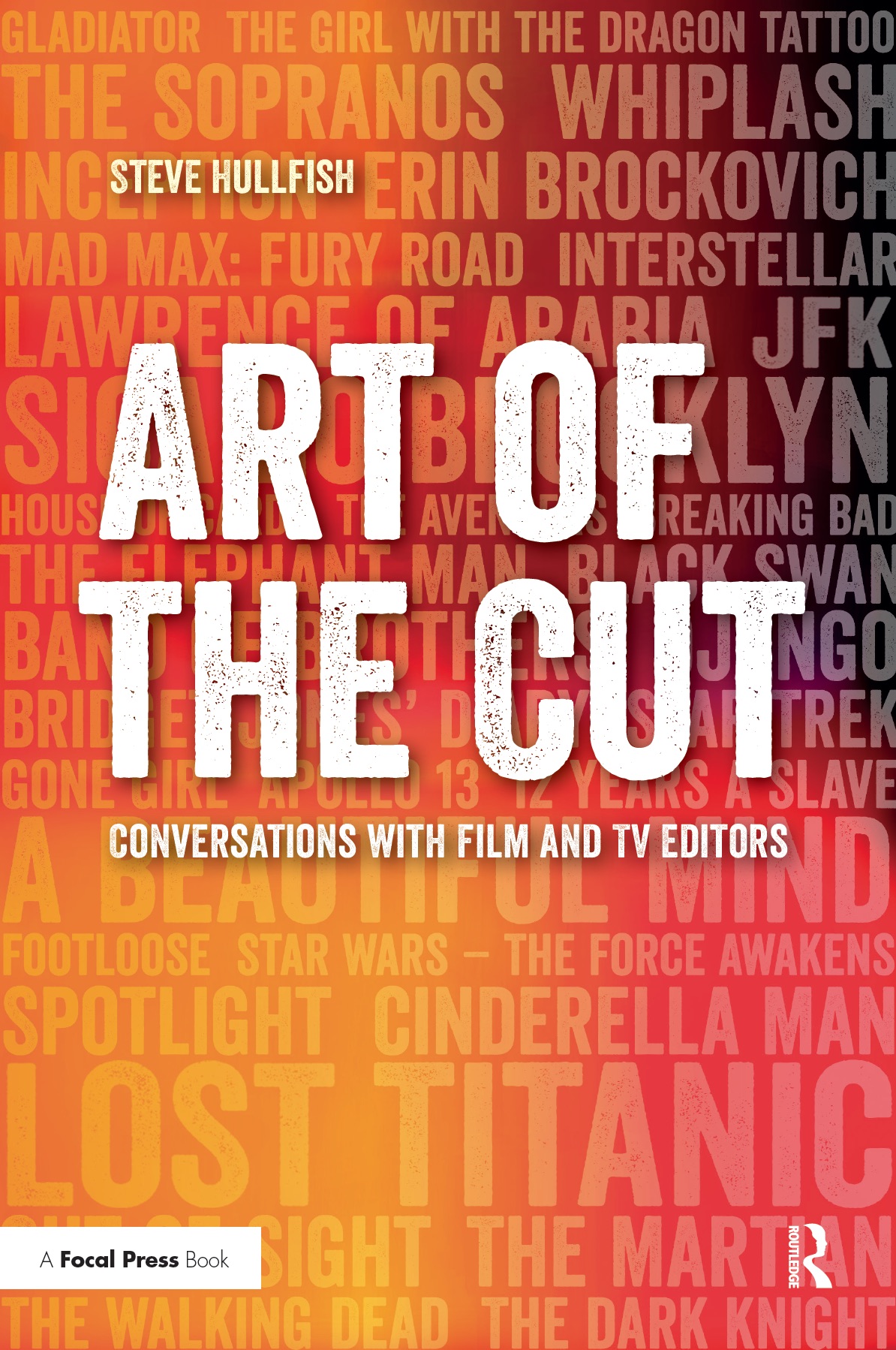 To read more interviews in the Art of the Cut series, check out THIS LINKand follow me on Twitter @stevehullfish
To read more interviews in the Art of the Cut series, check out THIS LINKand follow me on Twitter @stevehullfish
The first 50 Art of the Cut interviews have been curated into a book, “Art of the Cut: Conversations with Film and TV editors.” The book is not merely a collection of interviews but was edited into topics that read like a massive, virtual roundtable discussion of some of the most important topics to editors everywhere: storytelling, pacing, rhythm, collaboration with directors, approach to a scene and more. CinemaEditor magazine said of the book, “Hullfish has interviewed over 50 editors around the country and asked questions that only an editor would know to ask. Their answers are the basis of this book and it’s not just a collection of interviews…. It is to his credit that Hullfish has created an editing manual similar to the camera manual that ASC has published for many years and can be found in almost any back pocket of members of the camera crew. It is an essential tool on the set. Art of the Cut may indeed be the essential tool for the cutting room. Here is a reference where you can immediately see how our contemporaries deal with the complexities of editing a film. In a very organized manner, he guides the reader through approaching the scene, pacing, and rhythm, structure, storytelling, performance, sound design, and music….Hullfish’s book is an awesome piece of text editing itself. The results make me recommend it to all. I am placing this book on my shelf of editing books and I urge others to do the same. –Jack Tucker, ACE

Filmtools
Filmmakers go-to destination for pre-production, production & post production equipment!
Shop Now